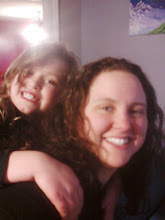I found this recipe online on how to make homemade gak slime! - Yes it's easier to buy it but a lot more fun to make it!

Elmer’s Glue® (8 oz bottle of Elmer’s Glue-All)
Borax (a powdered soap found in the grocery store)
Spoon
Measuring cup

 This recipe is based on using a brand new 8 oz bottle of Elmer’s Glue. Empty the entire bottle of glue into a mixing bowl. Fill the empty bottle with warm water and shake. Pour the glue-water mixture into the mixing bowl and use the spoon to mix well.
This recipe is based on using a brand new 8 oz bottle of Elmer’s Glue. Empty the entire bottle of glue into a mixing bowl. Fill the empty bottle with warm water and shake. Pour the glue-water mixture into the mixing bowl and use the spoon to mix well.
Add a drop or two of food coloring.
Measure 1/2 cup of warm water into the plastic cup and add a teaspoon of Borax powder to the water. Stir the solution – don’t worry if all of the powder dissolves. This Borax solution is the secret linking agent that causes the Elmer’s Glue molecules to turn into slime.
When you’re finished playing with your gak, seal it up in a zipper-lock bag or plastic container. 

Materials:
Elmer’s Glue® (8 oz bottle of Elmer’s Glue-All)
Borax (a powdered soap found in the grocery store)
Large mixing bowl
Plastic cup (8 oz size)
Spoon
Measuring cup
Food coloring
Water
Zipper-lock bag (or plastic container) to store it in
Zipper-lock bag (or plastic container) to store it in
Warm Water

 This recipe is based on using a brand new 8 oz bottle of Elmer’s Glue. Empty the entire bottle of glue into a mixing bowl. Fill the empty bottle with warm water and shake. Pour the glue-water mixture into the mixing bowl and use the spoon to mix well.
This recipe is based on using a brand new 8 oz bottle of Elmer’s Glue. Empty the entire bottle of glue into a mixing bowl. Fill the empty bottle with warm water and shake. Pour the glue-water mixture into the mixing bowl and use the spoon to mix well.Add a drop or two of food coloring.
Measure 1/2 cup of warm water into the plastic cup and add a teaspoon of Borax powder to the water. Stir the solution – don’t worry if all of the powder dissolves. This Borax solution is the secret linking agent that causes the Elmer’s Glue molecules to turn into slime.
While stirring the glue in the mixing bowl, slowly add a little of the Borax solution. Immediately you’ll feel the long strands of molecules starting to connect. Keep adding the Borax solution to the glue mixture (don’t stop mixing) until you get a perfect batch of gak. You probably wont use all the borax solution unless you want really stiff gak.
When you’re finished playing with your gak, seal it up in a zipper-lock bag or plastic container.








